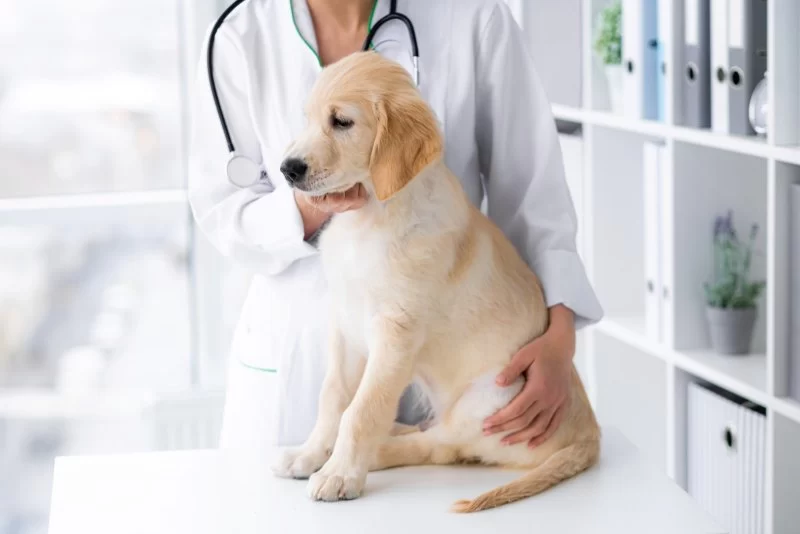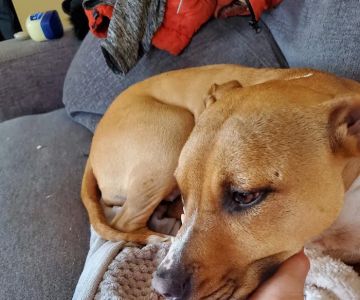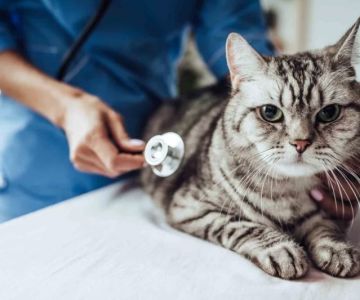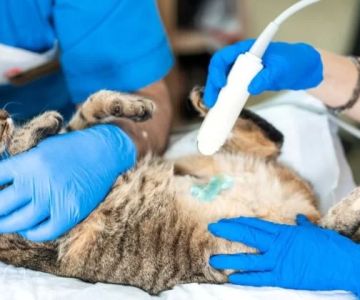- understanding-giardia-parasites — What Giardia and intestinal parasites are and how pets become infected
- symptoms-to-watch — Recognizing early signs in dogs and cats
- diagnosing-parasites — How veterinarians confirm Giardia or parasite infection
- treatment-methods — Effective treatments and what owners can expect
- preventing-reinfection — Steps to reduce environmental contamination and protect pets
- when-to-seek-help — When to involve veterinary professionals for further care
1. What Pet Owners Should Know About Giardia and Intestinal Parasites
Giardia and other intestinal parasites are among the most common causes of digestive illness in domestic pets. Giardia is a microscopic protozoan that infects the intestinal tract, while intestinal parasites—like roundworms, hookworms, and tapeworms—are larger and sometimes visible. Both can disrupt digestion and overall wellness in pets, especially in young animals or those with weakened immune systems.
Understanding how these parasites spread is key to preventing infections. Pets typically contract Giardia or intestinal parasites by drinking contaminated water, grooming themselves after stepping in infected soil, or interacting with other infected animals. Because the organisms are invisible to the naked eye, many owners do not realize their pet is at risk until symptoms appear.
1.1 Why Giardia Spreads Easily
Giardia is particularly stubborn because its cysts survive for weeks or even months in damp environments. A puddle in the backyard or a shared water bowl at a dog park can quickly become a transmission source. This resilience makes early detection and proper treatment crucial.
2. Early Symptoms That May Indicate Giardia or Intestinal Parasites
Recognizing the symptoms of Giardia or intestinal parasites early helps prevent complications. Symptoms can vary between cats and dogs, but most infections share similar patterns of digestive distress.
2.1 Digestive Symptoms
Owners typically notice:
1. Soft stool or diarrhea, sometimes greasy or foul-smelling 2. Vomiting, especially after meals 3. Sudden weight loss despite normal appetite 4. Increased gas or bloating
Pets with intestinal parasites may also pass worms in the stool, though this is not always the case.
2.2 Behavioral Changes
Infected pets may become lethargic, refuse meals, or show signs of abdominal discomfort. Puppies and kittens are particularly vulnerable—they may fail to gain weight or appear unusually weak.
2.3 Real Story: Milo’s Mysterious Upset Stomach
One pet owner described how her energetic Labrador puppy, Milo, suddenly developed chronic diarrhea. After switching foods and trying home remedies with no improvement, a stool test revealed Giardia. With proper treatment, Milo recovered quickly. His case highlights how easy it is to overlook early signs and how important timely veterinary testing can be.
3. How Veterinarians Diagnose Giardia and Other Intestinal Parasites
A veterinarian’s diagnostic approach usually begins with a physical exam and a detailed history of recent environments, water sources, and interactions with other animals. Because symptoms can mimic other gastrointestinal issues, lab testing is essential.
3.1 Fecal Testing
A fecal flotation test identifies eggs of intestinal parasites, while a Giardia antigen test detects the specific proteins shed by Giardia organisms. Multiple stool samples may be needed because cyst shedding can be intermittent.
3.2 Additional Diagnostics
For severe or persistent cases, bloodwork or imaging may be recommended to rule out other conditions or evaluate dehydration caused by diarrhea.
4. Treating Giardia and Intestinal Parasites Effectively
Most cases of Giardia or intestinal parasites respond well to medication when treated promptly. Veterinarians may prescribe dewormers, antiprotozoal drugs, or a combination depending on the type of parasite involved.
4.1 Medications
Fenbendazole and metronidazole are common treatments for Giardia. Dewormers are used to eliminate roundworms, hookworms, or tapeworms. It is important for owners to complete the entire course of medication even if symptoms improve early.
4.2 Managing Dehydration
Diarrhea and vomiting can cause fluid loss. Some pets may require electrolyte supplementation or fluids administered under veterinary supervision.
4.3 Environmental Cleaning
Because Giardia cysts survive in the environment, home sanitation plays a crucial role in breaking the cycle. Washing bedding, disinfecting floors, and bathing the pet after each loose stool episode all help reduce reinfection.
5. Preventing Reinfection Through Proper Hygiene and Environment Control
Stopping reinfection is often more challenging than treating the initial illness. Parasites thrive in shared spaces, dog parks, and multi-pet households.
5.1 Safe Water and Clean Surroundings
Offering clean, fresh water and preventing pets from drinking from puddles or streams reduces exposure. Regularly cleaning litter boxes, yards, and food/water bowls also helps limit parasite spread.
5.2 Bathing and Grooming
Giardia cysts cling to fur. Bathing pets during treatment ensures that parasites are not accidentally re-ingested during grooming.
5.3 Multi-Pet Households
If one pet becomes infected, all pets may require testing or treatment depending on exposure. Coordinated care prevents spread and recurrence.
6. When to Seek Professional Veterinary Help
Pet owners should consult a veterinarian whenever diarrhea lasts more than 24–48 hours, is accompanied by vomiting, or includes visible parasites. Untreated infections can lead to weight loss, nutrient malabsorption, and long-term digestive issues.
For pet owners needing expert diagnostic and treatment support, Hidden Brook Veterinary provides comprehensive care tailored to each pet’s needs. Their team can guide owners through the testing, treatment, and environmental management needed to fully resolve Giardia or parasite infections.
Understanding how to recognize and treat pet Giardia or intestinal parasites empowers owners to act quickly, protect their pets' health, and ensure long-term wellness. With attentive care and timely intervention, most pets recover fully and return to their happy, energetic selves.












